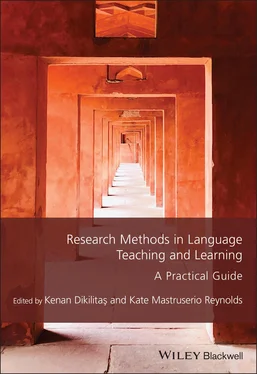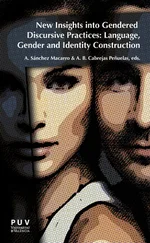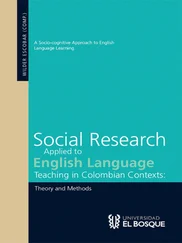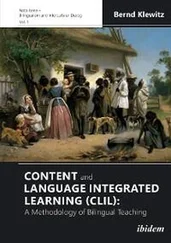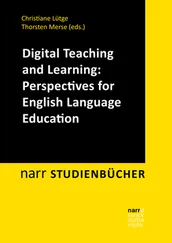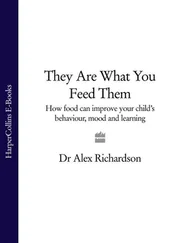Research Methods in Language Teaching and Learning
Здесь есть возможность читать онлайн «Research Methods in Language Teaching and Learning» — ознакомительный отрывок электронной книги совершенно бесплатно, а после прочтения отрывка купить полную версию. В некоторых случаях можно слушать аудио, скачать через торрент в формате fb2 и присутствует краткое содержание. Жанр: unrecognised, на английском языке. Описание произведения, (предисловие) а так же отзывы посетителей доступны на портале библиотеки ЛибКат.
- Название:Research Methods in Language Teaching and Learning
- Автор:
- Жанр:
- Год:неизвестен
- ISBN:нет данных
- Рейтинг книги:5 / 5. Голосов: 1
-
Избранное:Добавить в избранное
- Отзывы:
-
Ваша оценка:
- 100
- 1
- 2
- 3
- 4
- 5
Research Methods in Language Teaching and Learning: краткое содержание, описание и аннотация
Предлагаем к чтению аннотацию, описание, краткое содержание или предисловие (зависит от того, что написал сам автор книги «Research Methods in Language Teaching and Learning»). Если вы не нашли необходимую информацию о книге — напишите в комментариях, мы постараемся отыскать её.
Research Methods in Language Teaching and Learning
Research Methods in Language Teaching and Learning
Research Methods in Language Teaching and Learning — читать онлайн ознакомительный отрывок
Ниже представлен текст книги, разбитый по страницам. Система сохранения места последней прочитанной страницы, позволяет с удобством читать онлайн бесплатно книгу «Research Methods in Language Teaching and Learning», без необходимости каждый раз заново искать на чём Вы остановились. Поставьте закладку, и сможете в любой момент перейти на страницу, на которой закончили чтение.
Интервал:
Закладка:
The strategies I adopted in disseminating my original work (Wyatt, 2008) may provide insights not only into what I learned from it, but also my perceptions of how I needed to negotiate the quantitatively oriented research environment that surrounded TSE beliefs. In fact, I felt that two of the five cases were of teachers who overcame some initial self-doubt (Wheatley, 2002), but who were largely efficacious, in developing materials to enhance motivation (Wyatt, 2011a) and in supporting the development of reflective practice through mentoring (Wyatt & Arnold, 2012) respectively; the articles written about these two teachers were consequently focused primarily on their developing practical knowledge in these areas.
However, from other teachers in the collective case study, I gained deep insights into TSE beliefs, which shaped articles I subsequently developed. Wyatt (2010b), for example, explored a teacher’s TSE beliefs for supporting low achievers in group work activities in relation to dimensions of practical knowledge, using a framework based on Elbaz (1981), which included practical knowledge for learners and learning, the curriculum, teaching techniques, the self and the school context. In this study (Wyatt, 2010b), the teacher’s practical knowledge growth appeared uneven, but so did his TSE beliefs, and a good degree of fit between the two was identified. For example, on the positive side, he seemed to develop practical knowledge for learners and learning through experimenting with forms of group organization and analyzing learning outcomes, and also reported enhanced TSE beliefs in these areas. And yet some of his teaching techniques were less developed, for example, when organizing reading races in groups, and he also reported feeling inefficacious in relation to such tasks. My interpretations here, with the implications for teacher education they carried, were based on “data source” and “methodological” triangulation (Stake, 1995), drawing on observations, interviews, and analysis of reflective writing produced over time; the findings provided evidence that there is a need to study TSE beliefs in relation to practical knowledge.
Another article developed from the original study (Wyatt, 2008) focused more on the processes of change, as it examined how a teacher tried to overcome low TSE beliefs, specifically regarding classroom management and instructional techniques, in teaching much younger learners than she had taught before (Wyatt, 2013a). There was evidence of change; while the teacher reported that anxiety in the classroom and accompanying sleep loss disappeared, observational and interview data also suggested that she became more efficacious in employing strategies that appeared to support beneficial learning outcomes. In discussing these changes, I merged fields, as Wheatley (2005) recommends, in highlighting how reflective learning, practical knowledge growth and a belief that she could improve, which relates to a growth rather than a fixed mindset (Dweck, 2000), all seemed to help the teacher progress (Wyatt, 2013a). Explanations for TSE beliefs growth need to recognize the complexities of the change processes.
I developed these two case studies (Wyatt, 2010b, 2013a) before producing more theoretical articles from the original thesis (Wyatt, 2008) – for example, Wyatt (2014), which highlighted problems with much of the quantitative research to date – as I could then use these cases to illustrate theoretical arguments. The case study work also led into further data analysis in Wyatt (2015), which presented data relating to apparent lack of fit between practical knowledge and TSE beliefs; one teacher seemed over-efficacious in supporting reading skills development, while another seemed to unnecessarily doubt her capabilities to use communicative tasks to help her learners to develop speaking skills (Wyatt, 2015). Implications for in-service teacher education were raised. The final article from my thesis presented a conceptual model illustrating how TSE beliefs might develop (Wyatt, 2016).
While, to a certain extent, I managed to disseminate the results from my original thesis (Wyatt, 2008) quite effectively, the process was not without challenges and rejections, which invariably followed reviews that were mixed, for instance when one or two reviewers were in favor and another was against. Peer reviewers in the quantitative tradition sometimes strongly objected to my (occasionally fierce) criticisms of the field of research into TSE beliefs. One hostile review, for example, included the following:
The assumptions throughout pp. 1-8 are suspect and not well presented either theoretically, empirically, or practically. The author assumes there are connections between the issues selected but does not carefully and cautiously consider the confounding variables that undergird the various issues(anonymous review).
Occasionally, reviewers dismissed the relevance of observation to the study of TSE beliefs or seemed to be demanding a narrower “psychological lens” (Tschannen-Moran et al., 1998) that did not allow perspectives from related fields, such as language teacher cognition (Borg, 2006), or consideration of related constructs, such as mindset theory (Dweck, 2000). The paradigm wars (Gage, 1989) may largely be over, but not entirely perhaps in all research areas traditionally dominated by quantitative research methodology, such as TSE beliefs.
Conclusions
Methodological Issues
Since the two individual case studies discussed above (Wyatt, 2010b, 2013a), I am unaware of any further TSE beliefs case studies of individuals teaching any subject. So, there still appear to be unfortunately only four, including Milner and Woolfolk Hoy (2003) and Mulholland and Wallace (2001), and there may be reasons for this. Firstly, three of these case studies (Mulholland & Wallace, 2001; Wyatt, 2010b, 2013a) were longitudinal, with data collected over several years. This was possible as the researchers were teacher educators who had access to participating teachers while they were in schools; conducting the research therefore represented an extension of work activity rather than a replacement of it. In contrast, longitudinal studies stretching over several years are likely to be beyond the scope of full-time doctoral students, since the costs that would incur while the data accumulate might be prohibitive (Cohen et al., 2011). So, in-depth investigations over shorter periods might be more practical. For example, Richard Milner spent 5 months in a school observing lessons daily as a doctoral student (Milner & Woolfolk Hoy, 2003); his study thus benefited from relatively “prolonged engagement” and “persistent observation” (Lincoln & Guba, 1985), which can enhance a study’s credibility. It can be difficult, though, in some cultures for doctoral students to gain access to in-service teachers’ classrooms; Phan (2015), who seemed to fully understand the benefits of observation as part of a case study approach to investigating (L)TSE beliefs, was given permission to observe lessons by only two of the eight university teachers in her collective case study set in Vietnam and observed these two twice each. She speculated that the other teachers might have felt threatened or have had negative prior experiences of being observed (Phan, 2015).
Since observations can be vital in working “the researcher towards greater understanding of the case” (Stake, 1995, p. 60), a lack of observational data appears to limit various (L)TSE beliefs collective case studies such as Filatov and Pill (2015). Rushton (2003), for example, used interviews, group discussions, and reflective writing, but not the observations and post-observation discussions that can focus investigations on particular classroom tasks. If the focus of the investigation is on task-specific TSE beliefs, observations can provide clues as to which self-directed goals (Henson, 2001) are most important to teachers, which can help the researcher focus the study, as in Mulholland and Wallace (2001) and Wyatt (2010b, 2013a), and gain insights into how efficacious the teachers are in carrying out specific tasks (Wyatt, 2008). From observations of teachers’ “body language, gestures, eye contact, choice of words or voice” (Wyatt, 2015, p. 123), the researcher can infer teachers’ apparent levels of self-efficacy, while continually questioning the basis for such inferences reflexively, and using the semi-structured interviews conducted subsequently to probe further. Such observations can also, of course, furnish insights into related factors, including the performative aspects of the teachers’ practical knowledge (Wyatt, 2010b; Wyatt & Borg, 2011).
Читать дальшеИнтервал:
Закладка:
Похожие книги на «Research Methods in Language Teaching and Learning»
Представляем Вашему вниманию похожие книги на «Research Methods in Language Teaching and Learning» списком для выбора. Мы отобрали схожую по названию и смыслу литературу в надежде предоставить читателям больше вариантов отыскать новые, интересные, ещё непрочитанные произведения.
Обсуждение, отзывы о книге «Research Methods in Language Teaching and Learning» и просто собственные мнения читателей. Оставьте ваши комментарии, напишите, что Вы думаете о произведении, его смысле или главных героях. Укажите что конкретно понравилось, а что нет, и почему Вы так считаете.
